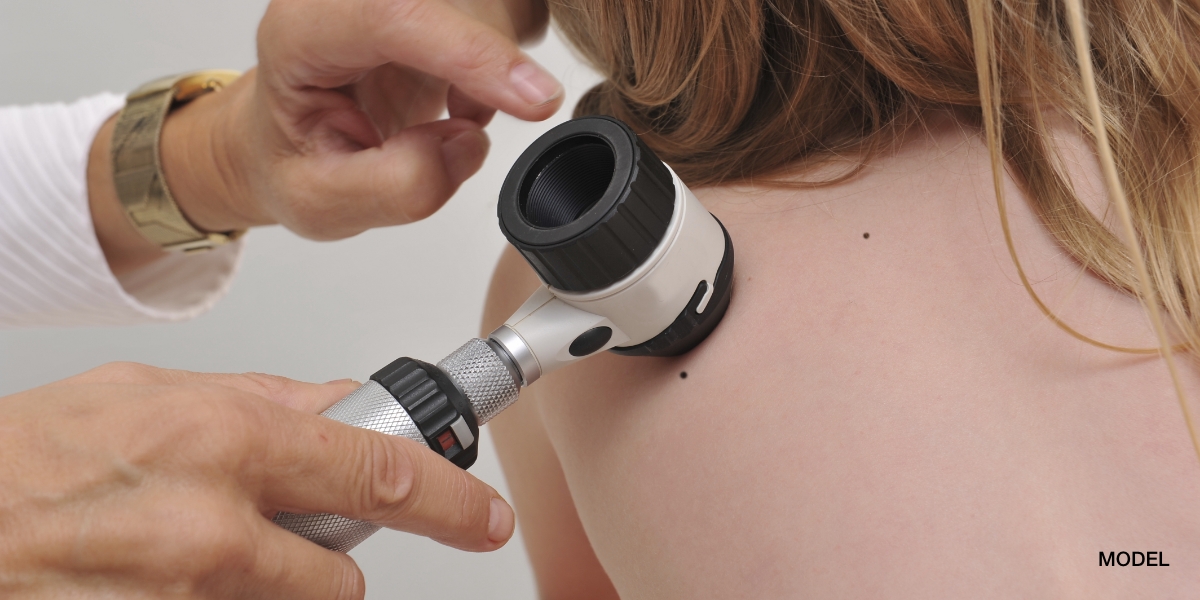
If you have moles on your body and perform regular self-skin checks (which dermatologist Dr. Perri recommends all his patients do), then you might be wondering, “How do I know if I have Melanoma? How can I tell the difference between a benign mole and a cancerous one?” While it’s true that Melanoma affects only 5% of skin cancer patients, it does account for 75% of all skin cancer-related deaths. So, between your annual skin cancer screenings, it’s important that you are checking your body for Melanoma signs, which you should report to Dr. Perri immediately. While learning the difference between what is Melanoma and what is just a normal mole can seem like a difficult task, it’s as simple as ABCD and E.
A Stands for Asymmetry
A benign, or non-cancerous mole is symmetrical. If you draw a line down the middle of it, the two sides will match. But, one of the first things that dermatologist Dr. Perri will check for in his skin cancer screenings is asymmetrical moles – moles whose two sides do not match. If Dr. Perri notices you have an asymmetrical mole, he will likely recommend that it be biopsied to check for Melanoma.
B Stands for Border
The borders of benign moles are smooth and even. Melanomas, however, have jagged, uneven borders. They may even have scalloped or notched edges. If you notice a mole with an uneven border, it’s crucial you visit dermatologist Dr. Perri for an annual skin cancer screening.
C Stands for Color
Non-cancerous moles are all one color, typically a single shade of brown. Melanomas can be multi-colored, with a variety of shades of brown, tan, black and even red, white or blue. If you notice a multi-colored mole, it’s time to come in for an annual skin cancer screening.
D Stands for Diameter
Benign moles are usually smaller in size, typically about 6mm in diameter and no bigger than the eraser on your pencil. But larger moles can be a sign of Melanoma. If you notice a larger mole on your body, you should have that mole professionally inspected, and perhaps even biopsied.
E Stands for Evolving
One of the biggest warning signs of Melanoma is a mole that evolves or changes over time. Any change in a mole can be cause for concern, including a change in size, shape, color, elevation. Also, if the mole has recently started bleeding, itching or crusting it’s important you don’t delay making an appointment to see Dr. Perri.
What Will Dr. Perri Do if He Suspects I have Melanoma? If dermatologist Dr. Perri suspects you have Melanoma, your safety and health will be his primary priority. Dr. Perri will apply a local anesthetic around the area of the mole, then use a blade to biopsy the mole from your skin. . The biopsied area will then be sutured and bandaged.
The biopsy will involve a lab looking at the mole under a microscope to check for any malignant skin tissue. The biopsy typically takes 2 weeks to perform.
What Do I Do If I Suspect I have Melanoma?
If you suspect you have Melanoma, it’s important that you come in for a skin cancer screening now. The sooner Melanoma is detected, the easier it is to treat.
Call our offices today to schedule a skin cancer screening.




